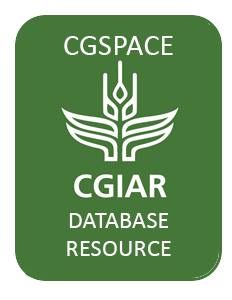Mission
To reduce hunger and poverty, and improve human nutrition in the tropics through research aimed at increasing the eco-efficiency of agriculture.
People
CIAT’s staff includes about 200 scientists. Supported by a wide array of donors, the Center collaborates with hundreds of partners to conduct high-quality research and translate the results into development impact. A Board of Trustees provides oversight of CIAT’s research and financial management.
Values
- Shared organizational ethic
- We respect each other, our partners, and the people who benefit from our work. We act with honesty, integrity, transparency, and environmental responsibility in all of our joint endeavors.
- Learning through partnerships
- We work efficiently and pragmatically together and with partners. Considering our diversity to be a key asset, we adapt readily to change and strive to improve our performance through continuous learning.
- Innovation for impact
- We develop innovative solutions to important challenges in tropical agriculture, resulting in major benefits for the people who support, participate in, and profit from our work.
Members:
Resources
Displaying 31 - 35 of 958Kenya: Kakamega county policy brief on land degradation
This policy brief aims to give an overview of land degradation hotspots in Kakamega County and the policy options for land restoration. In this assessment, land degradation is referred to as the persistent loss of ecosystem function and productivity caused by disturbances from which the land cannot recover without human intervention (unaided). Hotspots are defined as places that experience high land degradation and if left unattended, will negatively affect both human wellbeing and the environment.
Evaluación de la distribución espacial de la biodiversidad de papa en los distritos de Challabamba en Cusco y Quilcas en Junín mediante el uso del mapeo participativo = Assessment of the spatial distribution of potato biodiversity in the districts of C...
Challabamba en Cusco y Quilcas en Huancayo son dos zonas contrastantes con alta biodiversidad de variedades de papa. El presente estudio tuvo por finalidad evaluar la distribución espacial de la biodiversidad de papa mediante el mapeo participativo. Se determinaron las áreas de siembra de papa, el número de variedades de papa existente en la comunidad, el rango altitudinal de siembra por categoría varietal, la frecuencia de las variedades de papa, y la dinámica espacial-temporal de las zonas de siembra de papa en el territorio de las comunidades campesinas.
Kenya: Kakamega county policy brief on land degradation
This policy brief aims to give an overview of land degradation hotspots in Kakamega County and the policy options for land restoration. In this assessment, land degradation is referred to as the persistent loss of ecosystem function and productivity caused by disturbances from which the land cannot recover without human intervention (unaided). Hotspots are defined as places that experience high land degradation and if left unattended, will negatively affect both human wellbeing and the environment.
Protection, restoration and the sustainable use of landscapes — remedies to land degradation, and solutions to achieve the SDGs
Soil Organic Carbon Baselines for Land Degradation Neutrality: Map Accuracy and Cost Tradeoffs with Respect to Complexity in Otjozondjupa, Namibia
Recent estimates show that one third of the world’s land and water resources are highly or moderately degraded. Global economic losses from land degradation (LD) are as high as USD $10.6 trillion annually. These trends catalyzed a call for avoiding future LD, reducing ongoing LD, and reversing past LD, which has culminated in the adoption of Sustainable Development Goal (SDG) Target 15.3 which aims to achieve global land degradation neutrality (LDN) by 2030.


